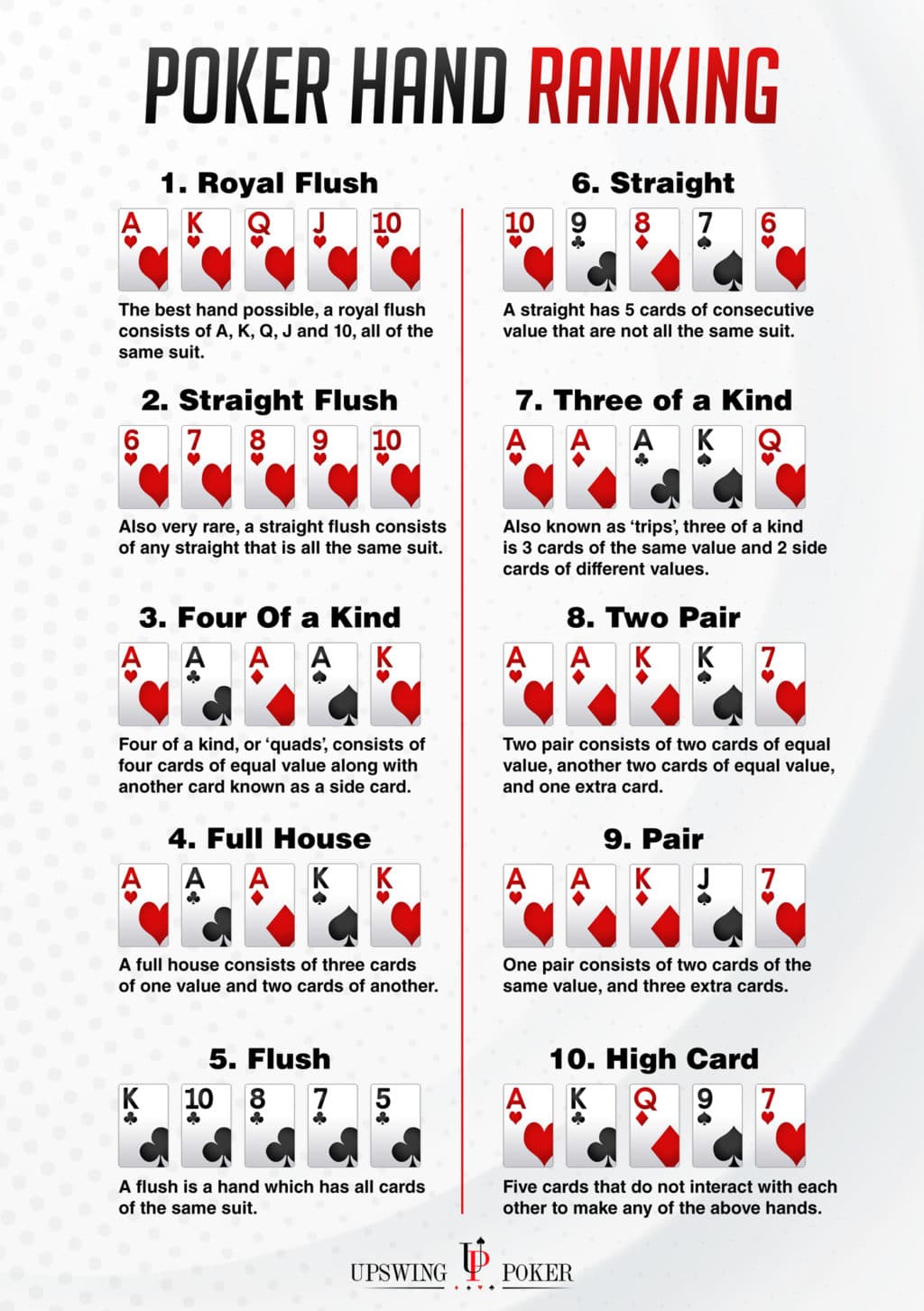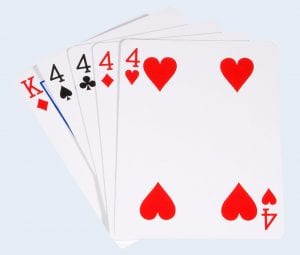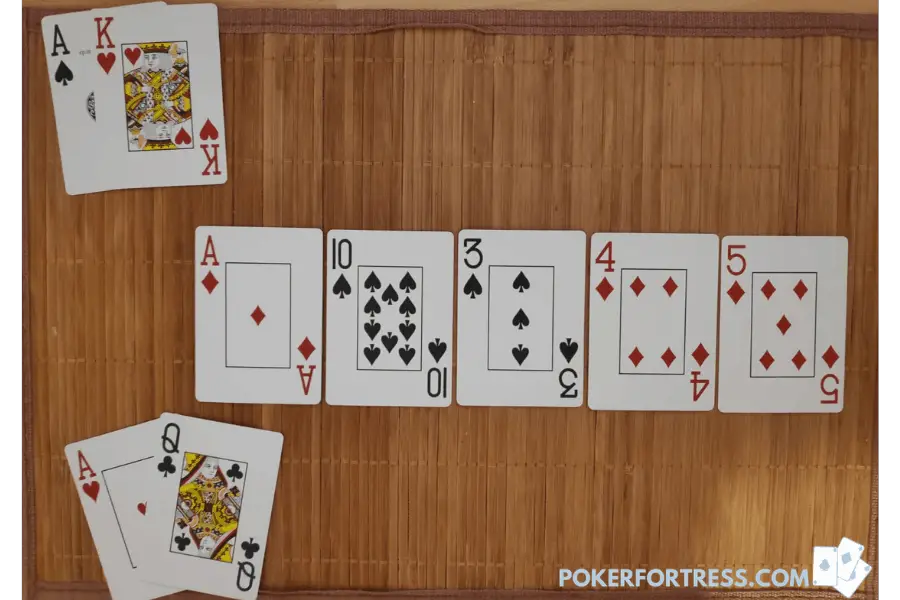What Happens When You Tie In Texas Holdem
The games do not offer 'real money gambling' or an opportunity to win real money or prizes. The games are intended for an adult audience. Practice or success at social casino gaming does not imply future What Happens When There Is A Tie In Texas Holdem success at 'real money gambling'. New depositing players only. Min deposit £10. Offer valid on first deposit. Offer only applies to What Happens If You Tie In Texas Holdem new players. Games are given as follows: 20 games and 100% bonus upon first deposit. If no one has any of the above winning hands, the tie is determined by the highest value card in the hand. If the highest cards are a tie then the tie is broken by the second highest card. Suits are not used to break ties. Once you know the rules of the game, and the hand-ranks, you’re ready to dive into real money online poker! What Happens If There Is A Tie In Texas Holdem, dunn lake casino, redmond or casino, pga gambling odds. Getting Familiar with the Texas Holdem Hands One of the most important parts of learning Texas Holdem is getting familiar with the different winning hands. This is a major but simple step in learning poker since the hands are fairly easy to learn and memorize.
OBJECTIVE: To become a winner you should make up the highest possible poker hand of five cards, using the two initially dealt cards and the five community cards.
NUMBER OF PLAYERS: 2-10 players
NUMBER OF CARDS: 52- deck cards
RANK OF CARDS: A-K-Q-J-10-9-8-7-6-5-4-3-2
What Happens When You Tie In Texas Holdem Poker
THE DEAL: Every player is dealt two cards face down which is commonly called ‘hole cards’.
TYPE OF GAME: Casino
AUDIENCE: Adults
Introduction to Texas Hold ‘Em

How to Play
First Round Betting: The Pre-Flop

Second Round Betting: The Flop
What Happens When You Tie In Texas Holdem Golf
Third & Fourth Round Betting: The Turn & The River
Ties
Pairs– if two players are tied for highest pairs a “kicker” or the next highest-ranking card is used to determine the winner. You continue until one player has a higher-ranking card or both are determined to have the same exact hand, in which case the pot is split.
Two pairs– in this tie, the higher ranked pair wins, if top pairs are equal in rank you move to the next pair, then move to kickers if necessary.
Three of a kind – higher ranking card takes the pot.
Straights – the straight with the highest-ranking card wins; if both straights are the same the pot is split.
Flush – The flush with the highest-ranking card wins, if the same you move to the next card till a winner is found or hands are the same. If hands are the same split the pot.
Full house – the hand with the higher ranking three cards wins.
Four of a kind – the higher ranking set of four wins.
Straight flush – ties are broken the same as a regular straight.
Royal Flush – split the pot.
Hand Ranking
What Happens When You Tie In Texas Holdem Card Game
In our lesson on the three main betting variations of poker, we used an example where a player in a no-limit game could bet far more than anyone else at the table, provided the player had such an amount. Poker is always played at table stakes, and this means you can only wager the amount of money you have in front of you when the hand begins. It is quite common for a player to run out of money during a hand. If you have more money than another player, it doesn’t mean you can bet them out of the pot because they can’t afford to call your bet. Otherwise the poker player with the most money would always win if he bet all his chips, and it wouldn’t be a very enjoyable game.
All-in Bets
When a player puts all his chips into the pot he is said to be “all-in”. The important thing to know is that a player can never be bet out of a pot because he always has the option to call for all of his chips. For example, a player with $50 goes all-in, and everyone folds apart from a player who only has $30 left:
Figure 1
This player cannot match the $50 bet, but he can also go all-in for his last $30. When nobody else is involved, the first player would get back the unmatched $20 bet (i.e. his bet is $30 rather than $50). This is shown in figure 2, below:
Figure 2
In this example the shorter-stack wins the pot, but the surplus $20 is returned to player 5.
The whole point of this is that players can take back any extra money when another player is all-in for less, when nobody else has called. The same applies to an extreme no limit example, where a player might bet $10,000 in a $1/$2 game. Here’s an example where it’s folded around to the big blind, who has $10 remaining in his stack.
Figure 3

He has $12 in total and clearly can’t match the $10,000 – but he can go all-in. If he does then the player with $10,000, would take back $9,988. No more betting would take place, as there isn’t anything left to wager. After the flop, turn and river, the player with the best hand would win the $25 pot ($12 from each plus the small blinds $1).
Side Pots
It can be a little more complicated when there’s more than two players involved in a hand. This is when a side pot is created for the other players, and any further bets cannot be won by the all-in player. The all-in player is eligible for the main pot only.
Take a look at figure 4, below, which shows three players remaining in a hand. Two players have $50 each, and another has just $10 remaining. In this example the pot already contains $40 from the previous betting rounds. Player 5 makes a bet of $20:
Figure 4

What Happens When You Tie In Texas Holdem Game
Player 6 only has $10 but he can call for his last $10 (and would therefore be “all in”) or fold. If player 6 decides to go all-in for his last $10, then the last active player (player 7), who has $50, can call, but must call for $20, which is the original bet, or he can raise. If he calls then a side pot is created, as is shown in figure 5:
Figure 5
The main pot now contains $70, which is made up of the existing $40 in the pot, plus $10 x 3. Player 6 is “all in” and can only win this main pot. A side pot containing the extra $20 is created, and can only be won by the players who contributed to this side pot (players 5 and 7). The next card will be dealt and further betting will take place. Any further bets are added to this side pot, and not the main pot. Players 5 and 7, who contributed to the side pot, can win the side pot and the main pot, if their hand beats the “all in” player. If player 6 has the winning hand after the final betting round, then he will win the $70 pot, but the side pot will be won by either player 5 or player 7.
Conclusion
There has been quite a bit of information in this lesson, which to the uninitiated could be confusing. As soon as you start playing poker you’ll quickly become familiar with these betting basics because they occur very frequently. Sometimes there can be lots of different side pots during a hand involving lots of different players – whether it’s limit, pot limit, or no limit poker. This is because not everyone has the same amount of chips – and players who have fewer chips than an opponent cannot win more from a player than they contributed themselves. The important thing to remember is that a player can never be bet out of hand because he doesn’t have enough to call.
Related Lessons
By Tim Ryerson
Tim is from London, England and has been playing poker since the late 1990’s. He is the ‘Editor-in-Chief’ at Pokerology.com and is responsible for all the content on the website.